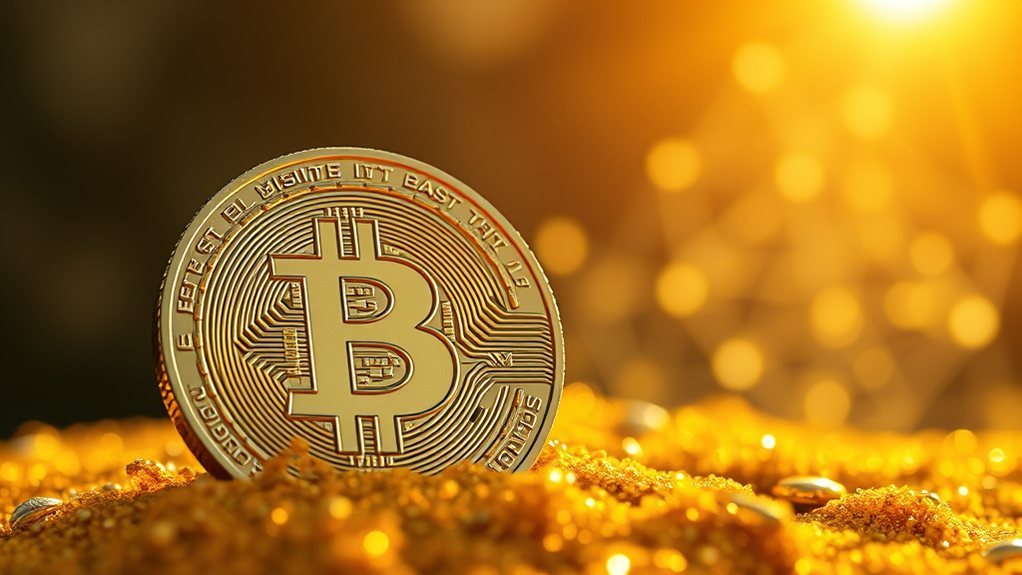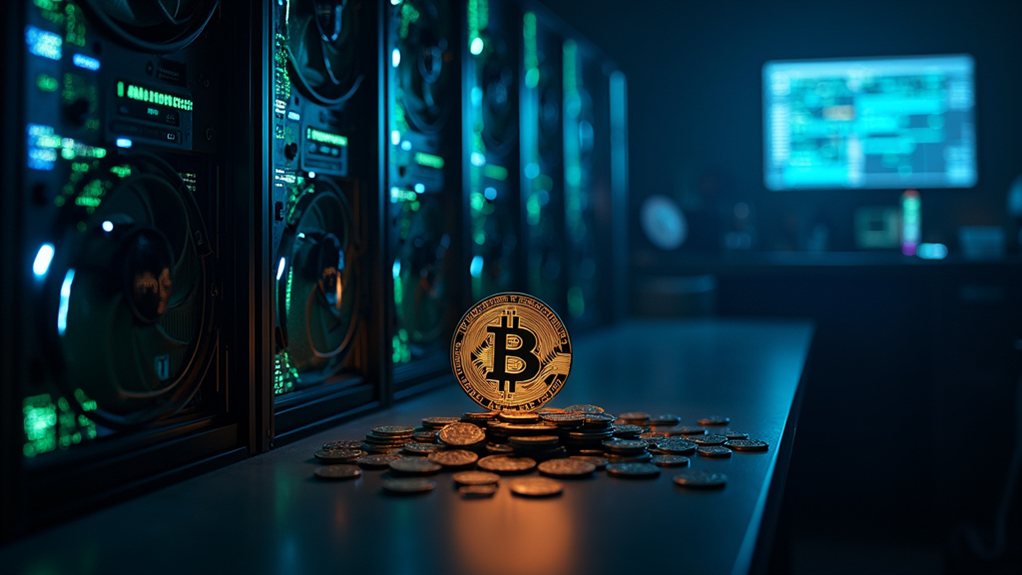When all 21 million bitcoins are mined around 2140, the network will undergo a major shift. Miners will no longer receive block rewards of new coins. Instead, they'll earn only transaction fees paid by users. This change raises questions about whether fees alone will provide enough incentive to maintain network security. Bitcoin's limited supply may increase its value as scarcity grows. The alteration represents a planned evolution in Bitcoin's economic model.

What will happen when the last Bitcoin is mined? This question concerns many in the cryptocurrency world as we approach Bitcoin's built-in limit. Bitcoin has a maximum supply of 21 million coins. Over 19 million are already in circulation, leaving less than 2 million left to mine. The final Bitcoin isn't expected to be mined until around the year 2140.
As Bitcoin nears its 21 million coin limit, the cryptocurrency world ponders what happens when the final block reward disappears in 2140.
Bitcoin mining creates new coins through a process where computers solve complex puzzles. Miners currently receive 6.25 bitcoins as a reward for each block they add to the blockchain. This reward gets cut in half approximately every four years in an event called "halving." When all bitcoins are mined, these block rewards will end completely.
After the last coin is mined, the Bitcoin network won't stop working. Instead, miners will shift to earning only transaction fees. Users pay these fees to have their transactions processed and added to the blockchain. This change from block rewards to transaction fees represents a major change in how the network operates. The transition aims to maintain network security and ensure the system remains viable long-term.
The end of mining rewards raises questions about network security. Miners secure the Bitcoin network by verifying transactions. They're motivated by financial rewards. Some experts worry that without block rewards, miners might lose interest if transaction fees aren't high enough. This could potentially make the network less secure.
Bitcoin's limited supply makes it increasingly scarce, similar to precious metals like gold. Some lost bitcoins further reduce the available supply. This scarcity is a key feature that supporters believe adds value. As the supply approaches its cap, this scarcity becomes more pronounced. This scarcity was intentionally designed by Satoshi Nakamoto to create a deflationary asset, contrasting sharply with traditional fiat currencies.
The economics of Bitcoin will change as mining rewards disappear. Bitcoin was designed as a deflationary currency, unlike traditional currencies that can be printed indefinitely. This deflationary nature might strengthen Bitcoin's role as a store of value rather than as an everyday currency. Historical data suggests that Bitcoin prices typically experience significant appreciation following Halvings as the supply shock affects market dynamics.
Technology continues to evolve around Bitcoin. Layer 2 solutions aim to improve transaction speeds and reduce fees. Mining hardware becomes more efficient over time. These advances may help address concerns about the post-mining era.
Market dynamics will likely shift as we approach the supply cap. Some predict higher Bitcoin prices due to increased scarcity. Others question whether transaction fees alone will sustain the network. Cryptocurrency exchanges, institutional investors, and regulators are all watching these developments closely.
The change to a Bitcoin world without mining rewards will be gradual. It's a planned feature of the system, not a flaw. How the market and technology adapt to this change will shape Bitcoin's future in the global financial landscape.
Frequently Asked Questions
How Will Bitcoin Miners Earn Income After All Coins Are Mined?
After all bitcoins are mined, miners will earn income solely from transaction fees.
As block space becomes scarce, users will compete by paying higher fees for faster confirmations.
Mining operations will also focus on improving efficiency through better hardware and cheaper energy sources.
Some miners may adopt renewable energy or relocate to areas with lower electricity costs.
The Lightning Network might change how on-chain fees work, potentially creating new revenue streams.
Will Bitcoin's Value Increase Once Mining Is Complete?
Bitcoin's future value after mining ends remains uncertain. Experts have mixed opinions. Some believe reduced supply could drive prices higher if demand continues.
Others caution that without block rewards, the network might face security challenges.
Bitcoin won't reach its maximum supply until around 2140, so immediate impacts aren't expected.
Market factors like adoption rates, regulation, and investor sentiment will likely influence Bitcoin's value more than mining completion.
Can the 21 Million Bitcoin Limit Ever Be Changed?
Technically, the 21 million Bitcoin limit can be changed through a hard fork, but it's highly unlikely to happen.
Such a change would require consensus from most network participants. Bitcoin's value proposition relies heavily on its scarcity, and changing the cap would face fierce resistance from miners, investors, and users.
The decentralized governance structure makes any major rule changes extremely difficult to implement.
How Will Transaction Fees Change in a Post-Mining Bitcoin Economy?
Transaction fees in a post-mining Bitcoin economy will likely rise as miners seek new income sources.
When block rewards end, fees will become miners' only payment. Users might compete for limited block space, driving costs higher.
Layer 2 solutions like Lightning Network could help manage everyday transactions. A tiered fee system may emerge, where urgent transactions cost more.
Network security will depend on fee revenue being sufficient to incentivize miners.
Will New Cryptocurrencies Replace Bitcoin After Mining Ends?
While new cryptocurrencies will continue to emerge, they likely won't completely replace Bitcoin after mining ends.
Bitcoin's established reputation and first-mover advantage give it staying power.
However, coins with better energy efficiency and faster transactions could gain market share.
The crypto landscape will probably become more diverse, with different coins serving specific purposes.
Bitcoin's role might shift more toward a digital store of value rather than daily transactions.










